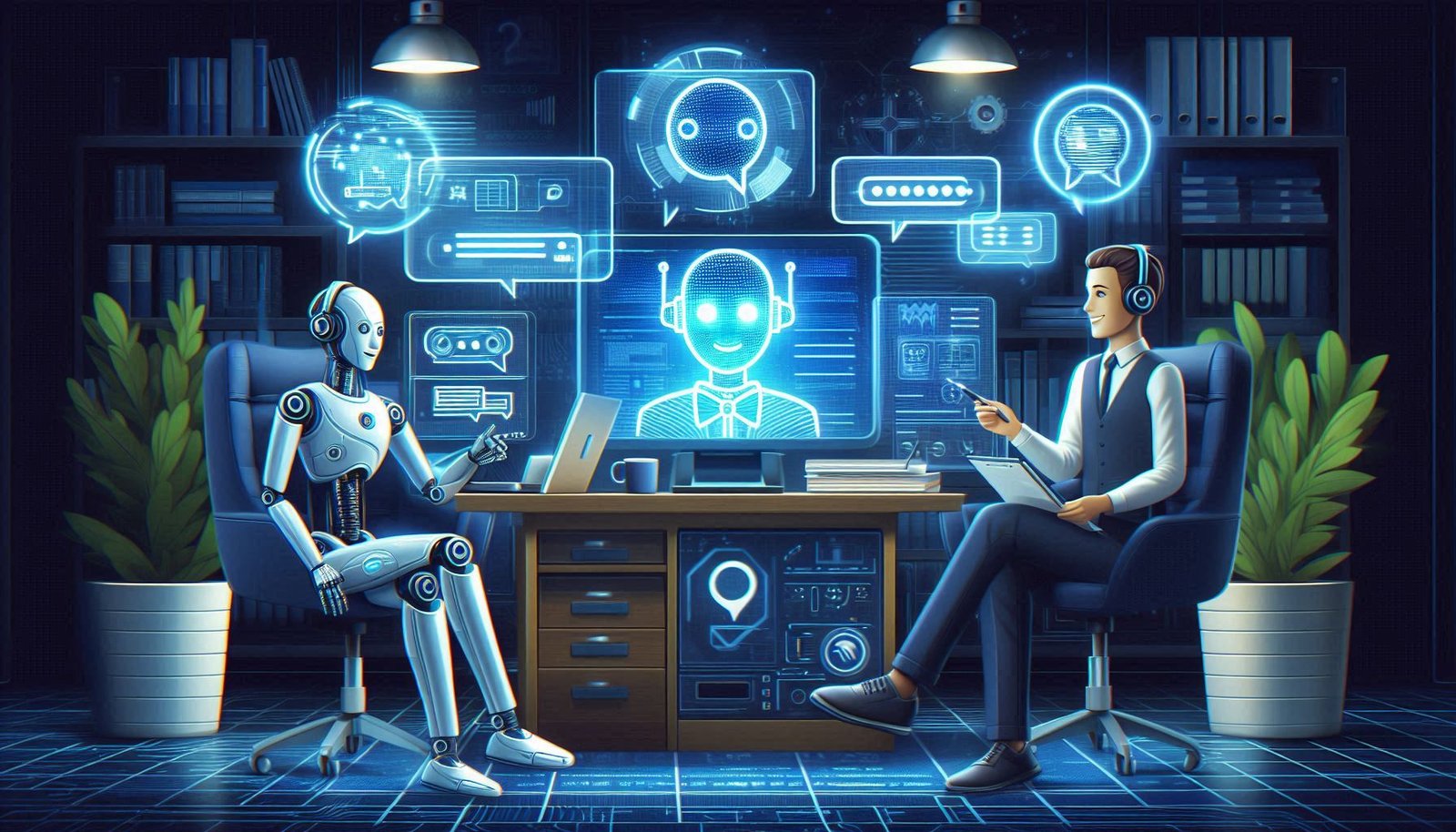In the era of digital transformation, AI-powered chatbots have emerged as game-changers in the customer service industry. With advancements in natural language processing (NLP) and machine learning, chatbots are now more intuitive, efficient, and capable of handling complex customer queries. Businesses across sectors like e-commerce, banking, and healthcare are leveraging these tools to provide 24/7 support, enhance customer satisfaction, and reduce operational costs.
1. What Are AI-Powered Chatbots?
AI-powered chatbots are virtual assistants that use artificial intelligence, machine learning, and NLP to simulate human-like conversations. Unlike traditional rule-based bots, AI chatbots can learn from interactions, understand context, and provide personalized responses.
- Key Features:
- Natural Language Understanding (NLU): Enables chatbots to interpret and respond to queries in conversational language.
- Contextual Awareness: Understands the user’s intent, even if the query is incomplete or vague.
- Self-Learning: Improves over time by analyzing past interactions.
Why It Matters:
These capabilities make AI chatbots more efficient and effective than traditional customer support methods.
2. Benefits of AI-Powered Chatbots in Customer Service
A. 24/7 Availability
AI chatbots provide round-the-clock support, ensuring customers can get assistance at any time, regardless of business hours.
- Example:
E-commerce platforms like Amazon use chatbots to handle queries about orders, returns, and refunds at any hour.
Why It’s Important:
24/7 availability improves customer satisfaction and ensures no query goes unanswered.
B. Faster Query Resolution
Chatbots can instantly retrieve information and provide solutions, significantly reducing wait times for customers.
- Example:
Banks like HDFC and ICICI use chatbots to help customers check account balances, transfer money, or reset passwords in seconds.
Why It’s Important:
Quick responses improve the overall customer experience and increase loyalty.
C. Cost Efficiency
AI chatbots reduce the need for large customer support teams by automating repetitive tasks, allowing businesses to save on operational costs.
- Example:
Companies like Zomato and Swiggy use chatbots to address delivery-related queries, reducing the burden on their human support staff.
Why It’s Important:
Cost savings enable businesses to allocate resources to other critical areas.
D. Multilingual Support
AI chatbots can communicate in multiple languages, breaking language barriers and catering to a global customer base.
- Example:
Travel platforms like Booking.com use chatbots to assist users in their preferred languages.
Why It’s Important:
Multilingual support ensures inclusivity and enhances the global reach of businesses.
3. AI Chatbots in Different Industries
A. E-commerce
AI chatbots in e-commerce help customers with product recommendations, order tracking, and payment assistance.
- Example:
Sephora’s chatbot offers personalized beauty product recommendations based on customer preferences.
B. Banking and Finance
In the banking sector, chatbots assist with account management, fraud detection, and loan applications.
- Example:
SBI’s YONO chatbot helps customers check account details, apply for loans, and make payments.
C. Healthcare
Healthcare providers use AI chatbots to schedule appointments, provide health advice, and answer FAQs.
- Example:
Ada Health’s chatbot helps users understand their symptoms and suggests possible treatments.
D. Travel and Hospitality
Travel companies use chatbots for booking assistance, itinerary updates, and real-time customer support.
- Example:
Expedia’s chatbot helps users book flights and hotels while answering queries about travel policies.
Why It Matters:
AI chatbots are versatile and can be tailored to meet the specific needs of different industries.
4. How AI Chatbots Use Advanced Technologies
A. Natural Language Processing (NLP)
NLP allows chatbots to understand human language, including slang, typos, and regional phrases, ensuring accurate responses.
B. Sentiment Analysis
AI chatbots can detect the tone of a conversation—whether the user is frustrated, confused, or happy—and adjust their responses accordingly.
- Example:
If a user is angry about a delayed order, the chatbot might escalate the issue to a human agent for resolution.
C. Machine Learning (ML)
ML enables chatbots to improve over time by analyzing user interactions and learning from mistakes.
- Example:
Chatbots like ChatGPT-powered bots can provide more accurate and detailed responses with each interaction.
Why It’s Revolutionary:
These technologies make AI chatbots more human-like, improving their ability to handle complex queries.
5. Challenges of AI-Powered Chatbots
While AI chatbots offer numerous benefits, they come with challenges that businesses must address:
- Key Challenges:
- Limited Understanding: Chatbots may struggle with highly specific or uncommon queries.
- Data Privacy Concerns: Handling sensitive customer data requires strict compliance with privacy laws like GDPR.
- Over-Reliance on Automation: Customers may feel frustrated if they cannot easily connect with a human agent.
How to Overcome These Challenges:
- Implement hybrid systems that combine chatbots with human support.
- Use secure data encryption to protect customer information.
- Continuously train chatbots to handle diverse queries.
6. The Future of AI-Powered Chatbots
The future of AI chatbots looks promising, with innovations that will make them even more powerful and versatile.
- Future Trends:
- Voice-Activated Chatbots: Integration with smart speakers like Alexa and Google Home.
- Emotionally Intelligent Bots: Chatbots that can detect and respond to emotional cues.
- Hyper-Personalization: AI chatbots that offer tailored experiences based on user behavior and preferences.
Why It’s Exciting:
As AI technology advances, chatbots will become indispensable tools for businesses, delivering unmatched customer service.
Conclusion:
AI-powered chatbots are transforming the customer service landscape by providing 24/7 support, faster query resolution, and cost efficiency. With applications across industries and advancements in AI technologies, chatbots are poised to become even more integral to business operations. However, addressing challenges like data privacy and over-automation will be crucial for businesses to fully leverage the potential of AI chatbots.
Stay tuned with Computer Academy for more updates on AI innovations, customer service trends, and the future of technology.
How AI-Powered Chatbots are Transforming Customer Service
Table of Contents
Discover more from COMPUTER ACADEMY
Subscribe to get the latest posts sent to your email.

One thought on “How AI-Powered Chatbots are Transforming Customer Service”